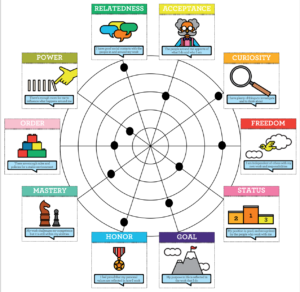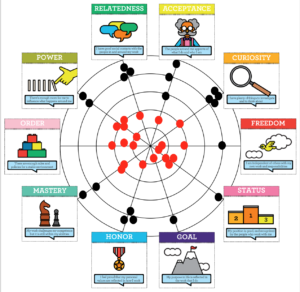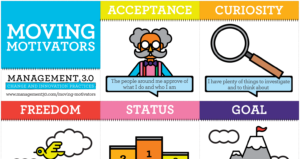You have a team member who has a pressing issue. It’s the single most important thing that they need to resolve. They explain the problem to a coworker, suggest a solution and ask for support… and all they get is a tepid response. This is a situation that repeats itself across workplaces every day. There are many reasons why people refrain from helping. They might not have the competence, they might disagree with the solution/problem or maybe they just don’t have the time. But what happens when they have the competence, agree with the assessment and could easily make time, but choose not to? Why don’t they? How do you help your team navigate these situations?
What motivates us
Sometimes people aren’t moved to help someone because they have different priorities. They agree that the problem is a problem, they may also agree with the solution, but they don’t agree with the urgency. Their priorities are different because they have a different set of motivators. You can alleviate some of the frustrations that arise from this situation by helping your team understand what motivates them. I’ve been using Jurgen Appelo’s “Moving Motivators” as a group exercise to help one of my teams.
Method
Prep: Print out an A4 version of the moving motivator polar chart for each person, and one A2 chart for the whole group.
You also need pens (enough for each person): two colors, red and black would work well.
The meeting: If there are more than 7 participants split them into smaller groups
 Method: Ask each person to rate each motivator by placing dots on the axes. The dots should be closer to the card if this is an important motivator, towards the center if it’s not.
Method: Ask each person to rate each motivator by placing dots on the axes. The dots should be closer to the card if this is an important motivator, towards the center if it’s not.
Once everybody is done, ask each person in the group to talk about their top three motivators. How do they interpret these cards, and why are they important?
Next, have each person talk about the lowest three. What do these cards mean to them, and why are they less important?
You’ll notice during the exercise that people interpret these cards differently, this is an important part of the discussion! For one person “Status” might mean that people recognize the work they do, and that they get credit for it, while for another person it might mean that they are able to influence those around them, because their expertise is acknowledged. There are no right or wrong interpretations, but make sure each person explains what the card means to them and why it’s important or not.
 Finally, have the team members plot their values on the shared, larger print out. Using two different colored markers (e.g. red and black) ask each person to use black for the top three motivators, and red for the lower three ones. This allows everybody to see the similarities and differences in what motivates the team.
Finally, have the team members plot their values on the shared, larger print out. Using two different colored markers (e.g. red and black) ask each person to use black for the top three motivators, and red for the lower three ones. This allows everybody to see the similarities and differences in what motivates the team.
Ask the group for takeaways from the exercise!
Outcome
Team members develop a better understanding for what makes the others tick. It helps start discussions on the right foot. In one of my teams the exercise led to a discussion of one motivator that didn’t register on anybody’s top three: “Order”. It turned out that no one felt the need to work in an environment where there are a lot of pre-set rules. However, that didn’t mean that the team doesn’t want any rules, they want shared rules that they create together.
Credits:
The moving motivators chart was generated using polar coordinates graph paper from this website. Here’s the pdf: polar graph paper and the moving motivator images were taken from Jurgen Appelo’s site. This is usually a one on one exercise and you’ll find more information about how to run it on the Jurgen’s site.
Get in touch via my homepage if you have questions or comments!





Hi Yassal,
I wanted to use the moving motivators for my team in the retrospective, this is how I came across your article. Thank you very much for sharing the approach. I am curious to try it with my team. Maybe you can share some more insights on how to interpret the results. I am looking forward to seeing how my team will interpret the cards and where their motivation lies. More than that, I am wondering how much we can do to change the environment to align it with the team’s motivation.